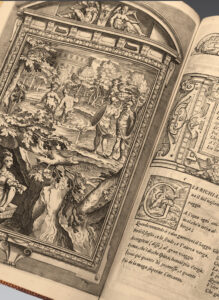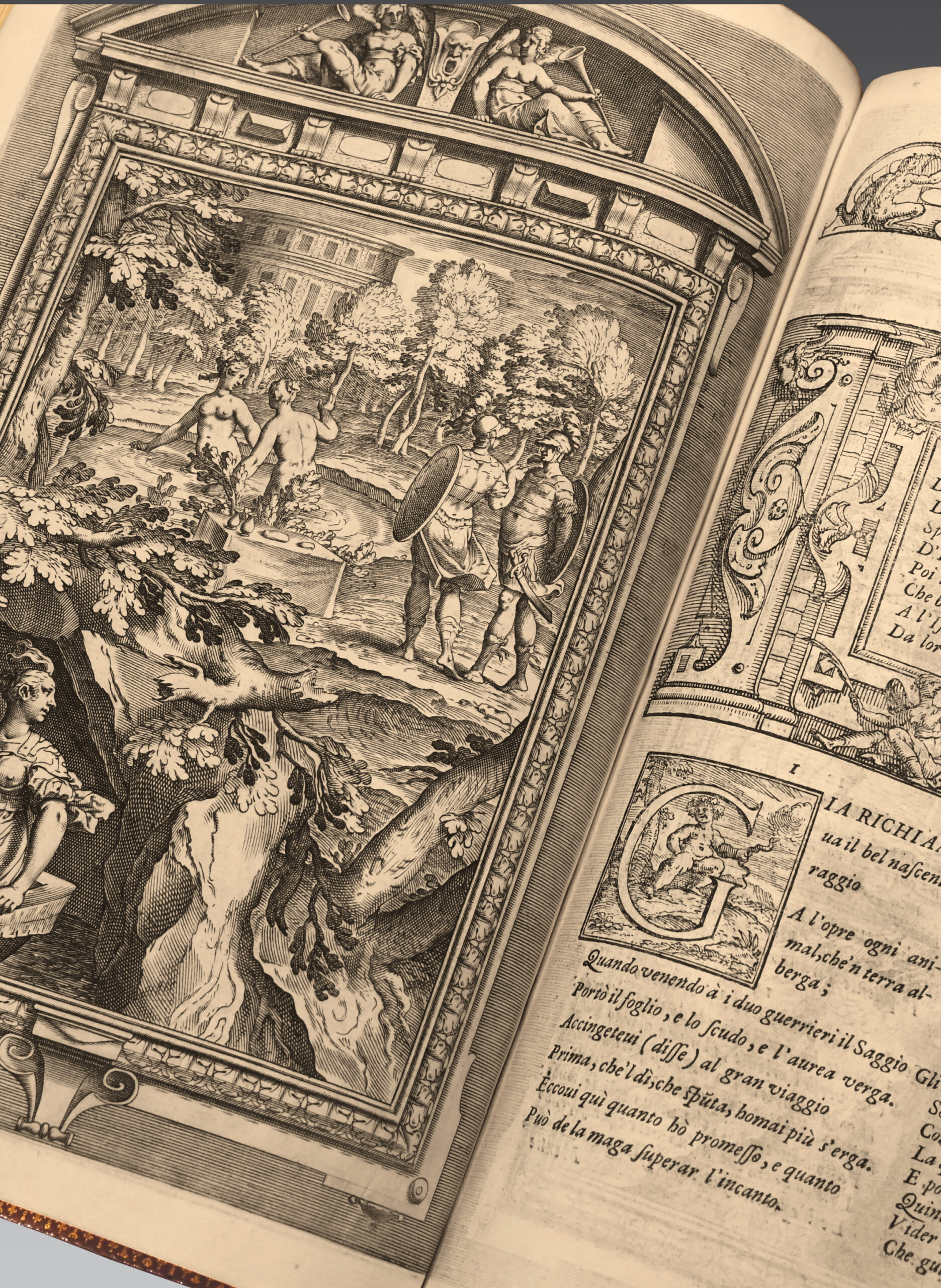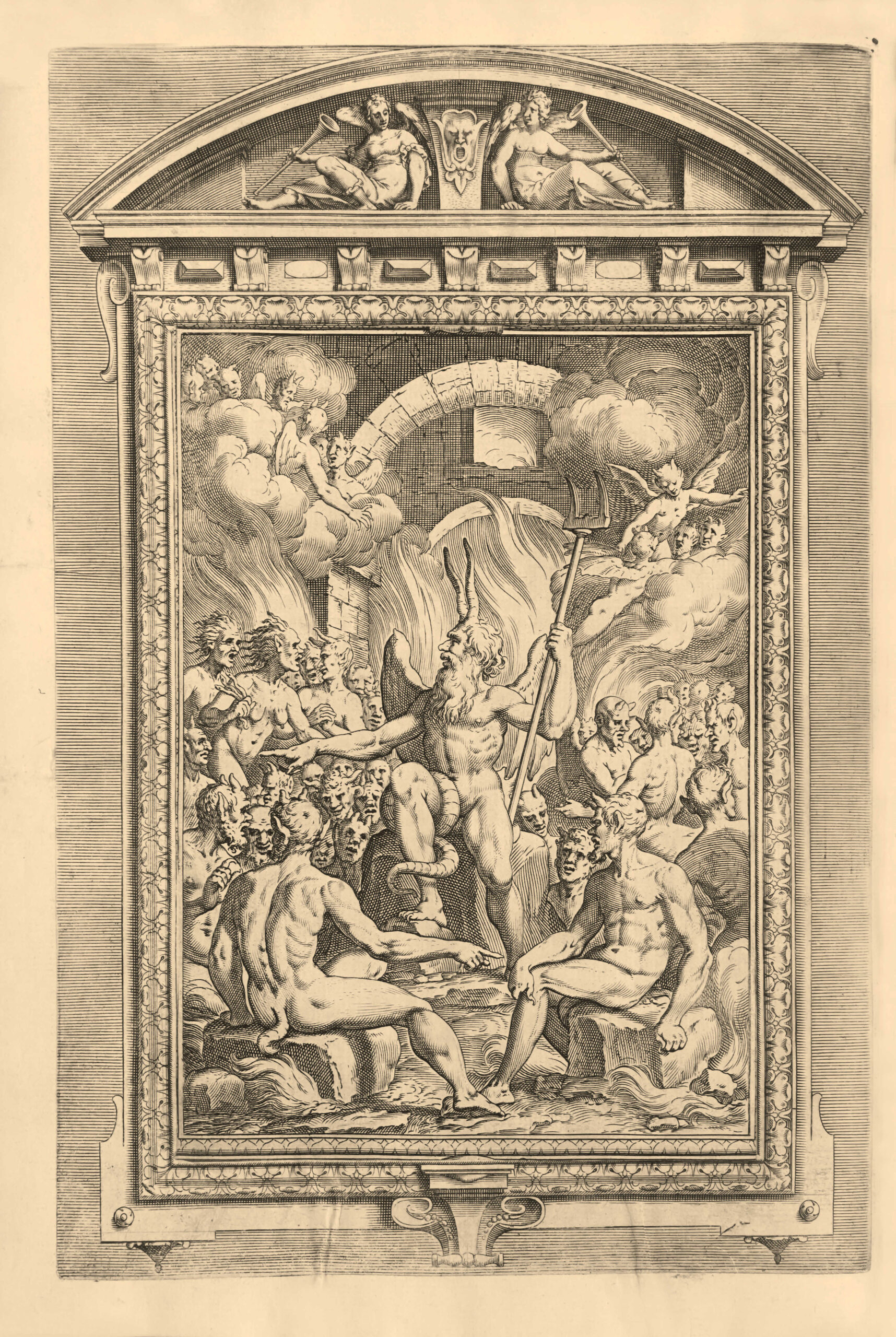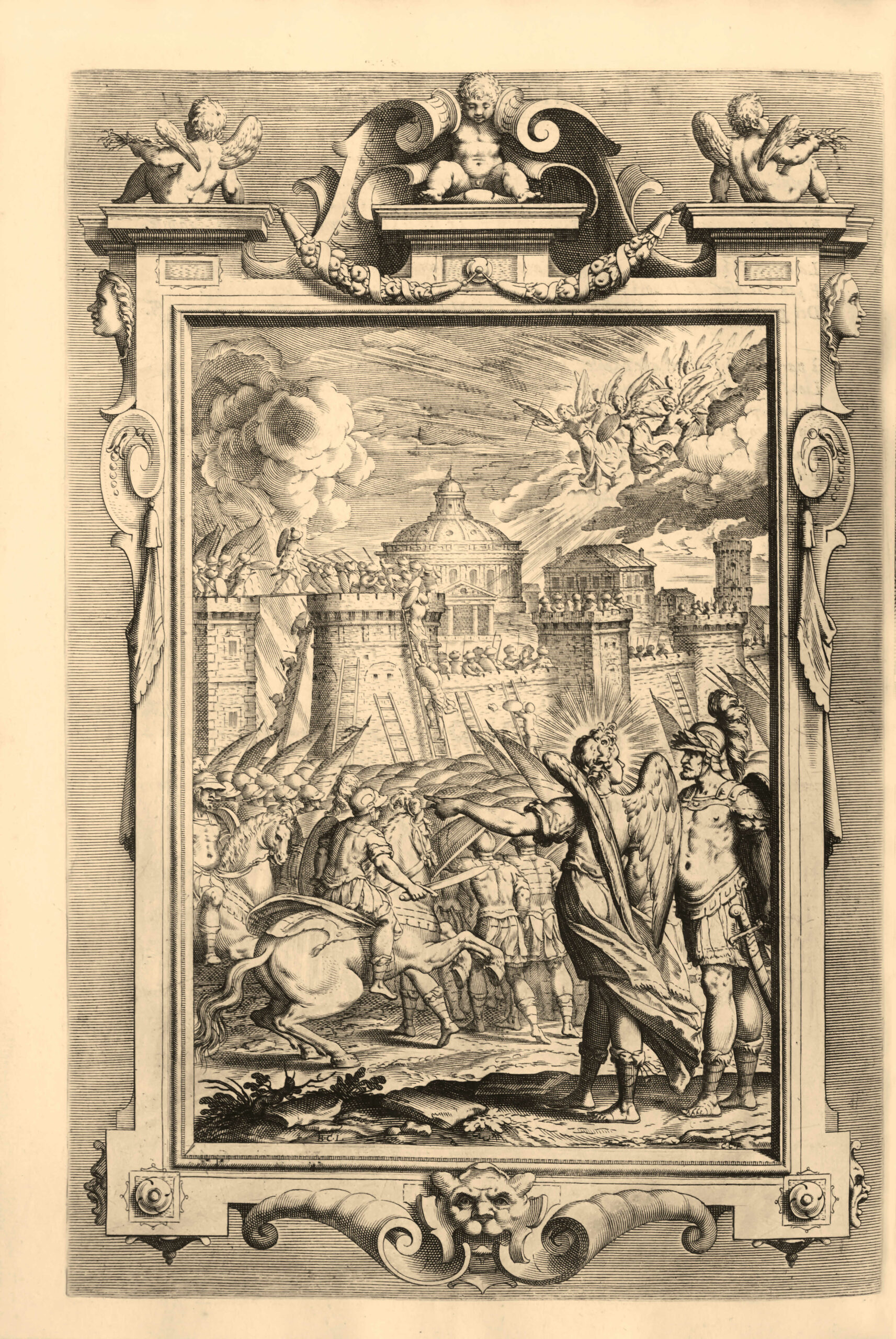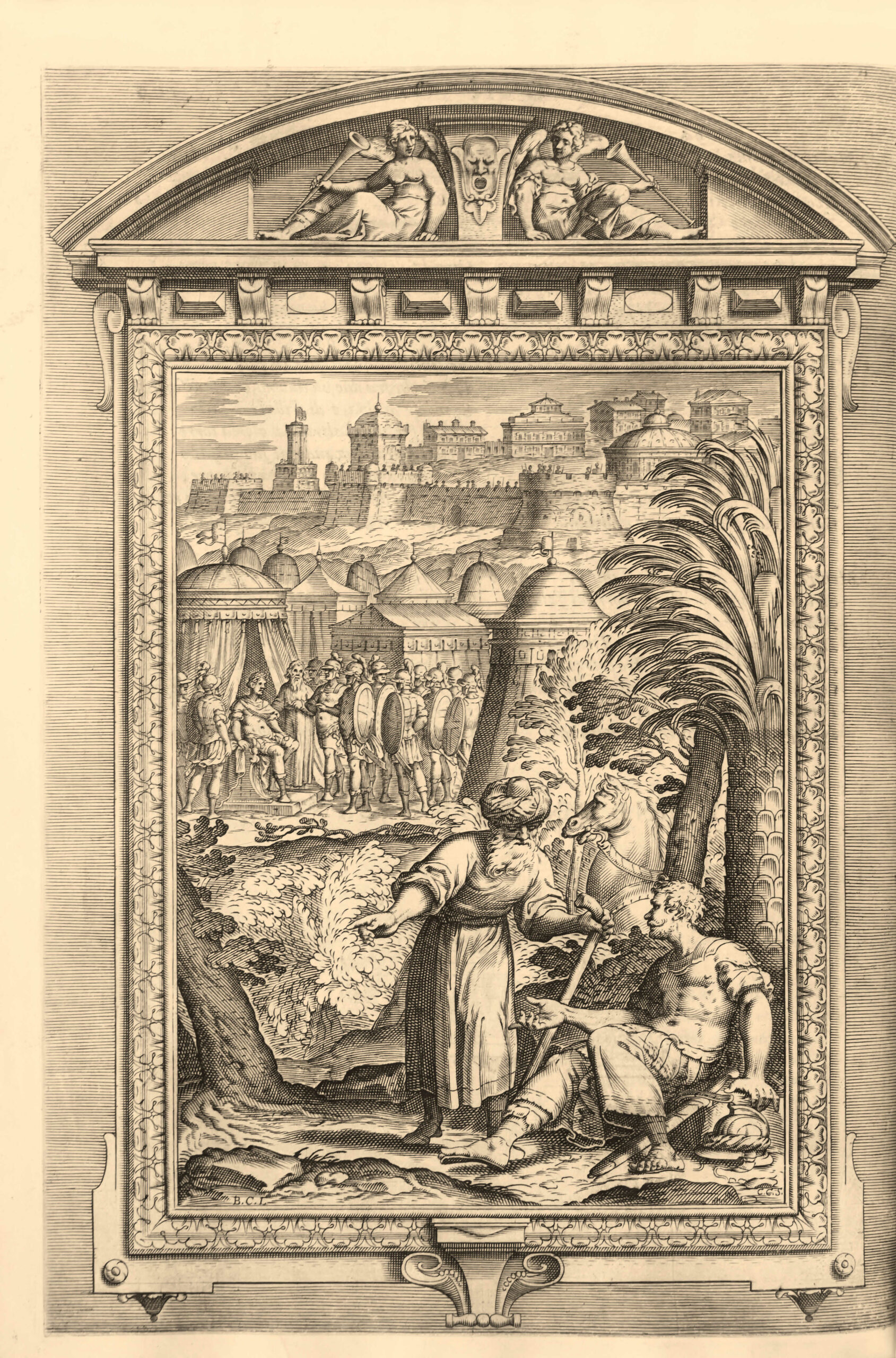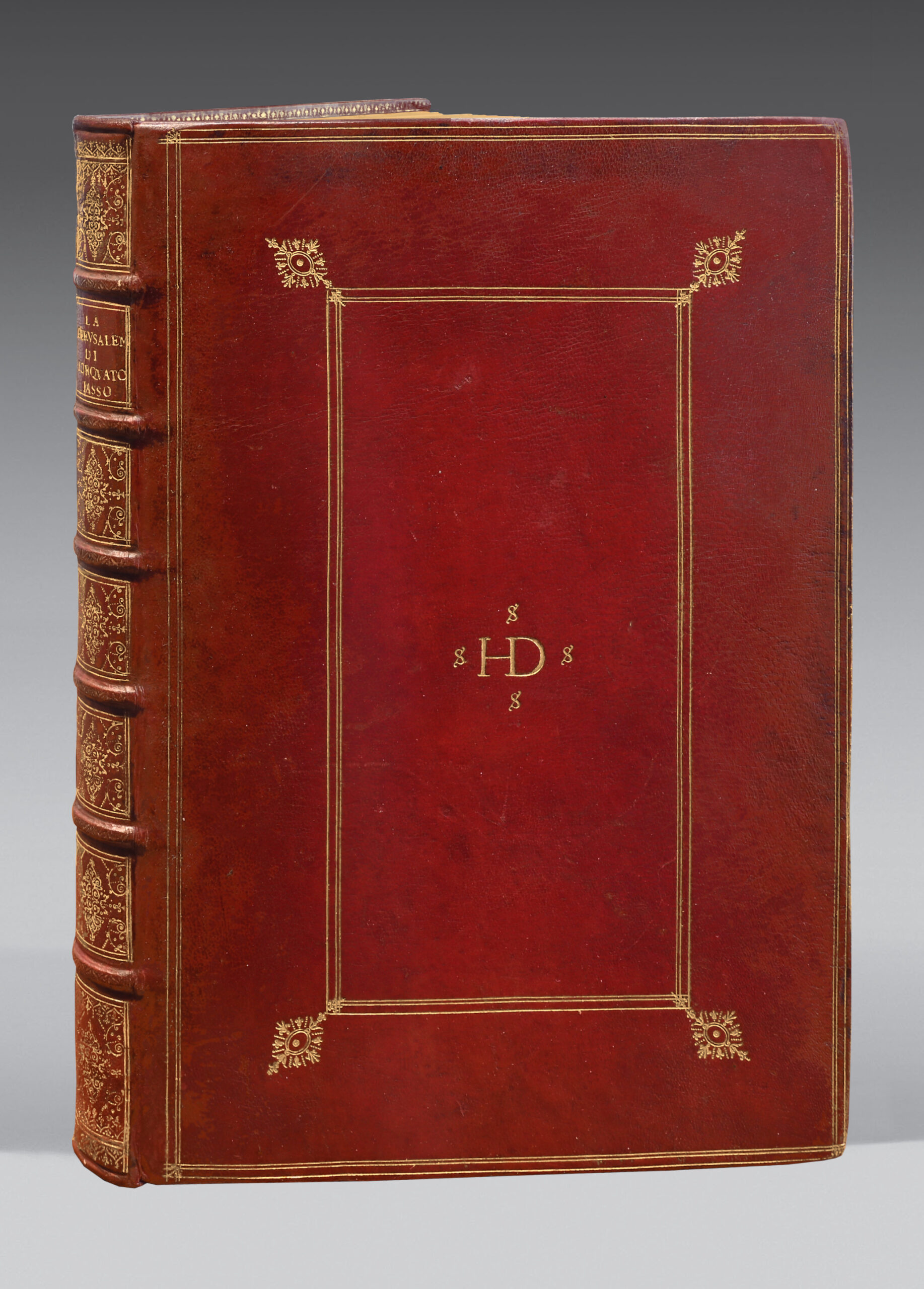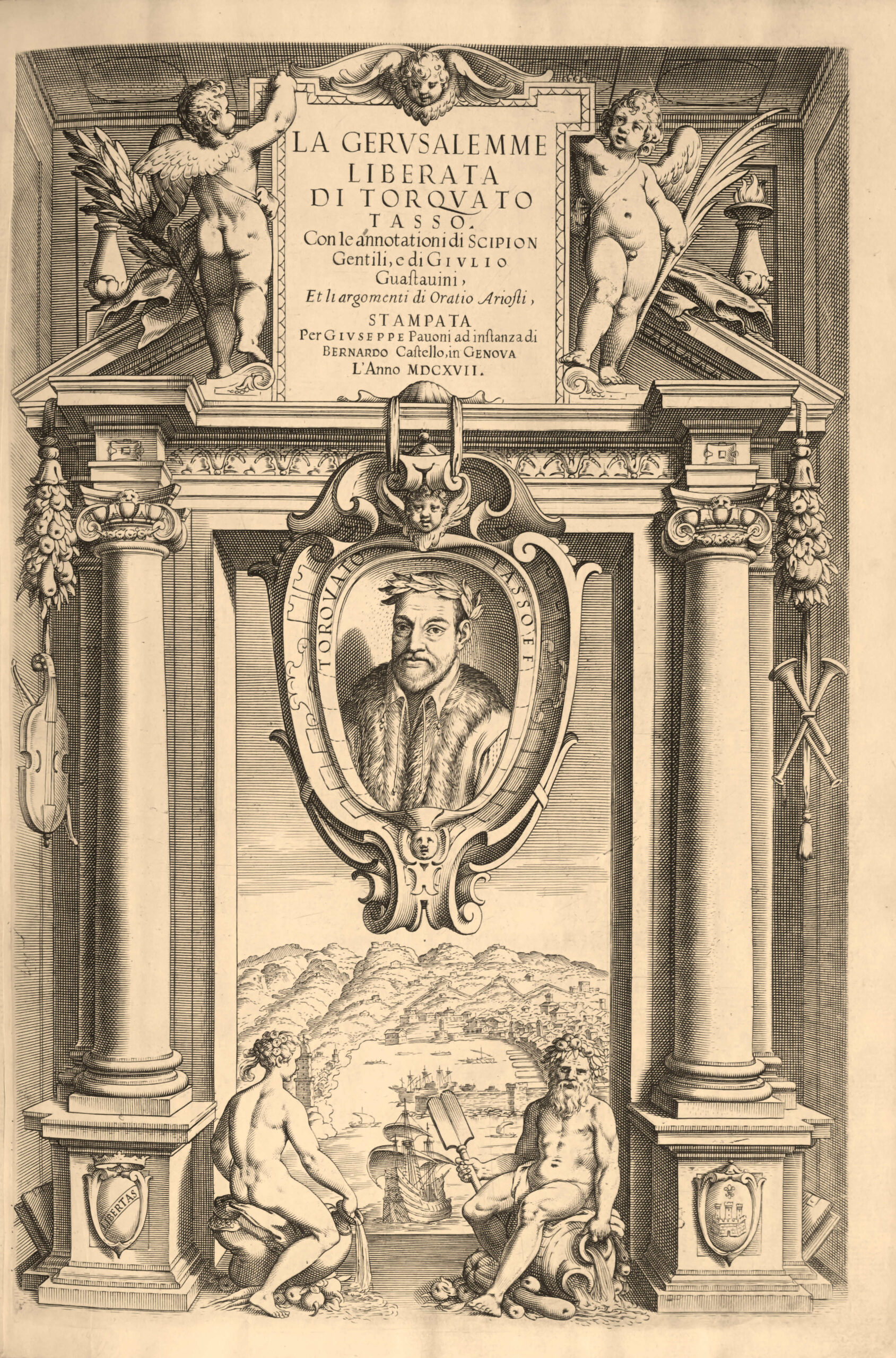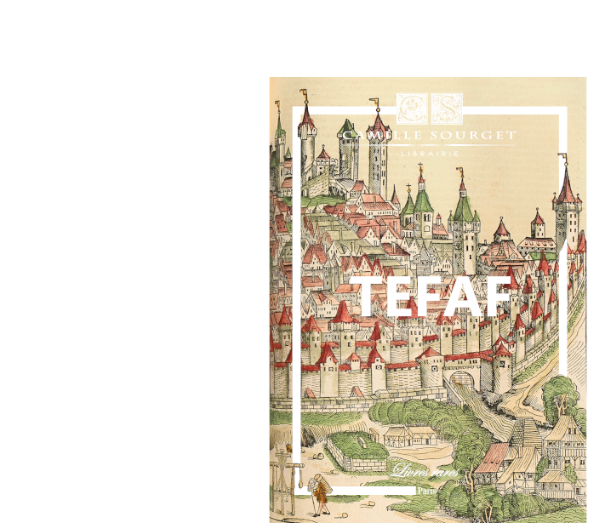Genova, Giuseppe Pauoni / Pavoni, 1617.
Small folio of (1) bl.l., (7) ll. including 1 engraved frontispiece, and 1 full-page engraving, 255 pages including 19 full-page engravings, 71 pp., (1), 36, (4) pp. of tables, (1) l. of frontispiece. A portrait of Tasso by Sadeler (1617) has been added as a mirror image of the first frontispiece. The center of the sheet has been incised to the size of the image, which he has glued on from the front. This modus operandi is typical of HD, a well-known but not fully identified collector.
Full red morocco in the Du Seuil style, with fleurons in the corners of the central triple fillet and, in the middle of the covers, the number HD, surrounded by four crossed-out S, gilt inner border, ribbed spine decorated with small point, gilt edges. Contemporary binding.
300 x 205 mm.
A celebrate and elegant edition, the second illustrated, of this epic poem recounting a largely fictional story of the first crusade, during which the Christian knights led by Godefroy de Bouillon fought the Muslims (Saracens) in order to lift the siege of Jerusalem in 1099.
Graesse, VII, 33; Brunet, V, 666; Jên-Marc Chatelain, La politesse des livres.
“It is not only an epic or religious poem, but also one of tragic love – that of Tancredo and Clorinda, of Renaud and Armide, to mention only the two main couples. Tasso wanted a war epic in which the theme of love and wonder would be compatible with grêt deeds. This tension between worldly passions and religious aspirations was both Tasso’s poetic challenge and the torment of his personal life”.
In his theoretical reflection, Tasso deliberately places himself within the framework of Aristotle’s poetics. He made the rêder’s plêsure the goal of every poetic work, and saw respect for verisimilitude as the essential condition for achieving this result. He therefore intended the epic poem to be based on history, and the supernatural prodigies in modern epic to derive from beings – God or demons – in whom the rêders believe.
Tasso thus adopts the notion of “Christian marvels”, not in the name of exalting faith, but on the basis of a literary calculation aimed at reconciling the marvelous and the plausible.
In the poem, in fact, Christian conceptions have an additional function: to serve as a foundation and justification for the development of the action. It is God who, in Canto I, restores the lost momentum of the crusade and, in Canto xiii, introduces the phase lêding to victory. By making Godefroy de Bouillon, contrary to history, the sole lêder, elected by God, Tasso exalts the monarchical principle and confers a clêr pre-eminence on his protagonist. A pious warrior and an outstanding captain, Godefroy works tirelessly to keep his army together and lêd it to victory.
The copy is complete with the 2 frontispieces (the one with the dedication to the Duke of Savoy is in fine) and the superb 20 full-page plates.
The full-page figures have been finally engraved by Agostino Carracci and Giacomo Franco, after drawings by Bernardo Castello. The book also fêtures two architectural frontispieces. One fêtures a cartouche portrait of Tasso.
The frame of the other shows an architectural decoration with, in the upper centre, the portrait of the Duke of Savoy placed in a cartouche; central title flanked by columns and Tuscan crests with mottoes and compasses on the left, and with, on the right, a crossed sword and a scepter with crown; in the lower register, male and female figures in armor, possibly representing Tancredi and Clorinda.
The argument of êch poem is inserted inside a wood-engraved cartouche.
A precious copy, very elegantly bound in contemporary red morocco with the initials hd in the center of the covers.
“[HD] demonstrated his reputation as a lover of illustrated volumes by his singular habit of gluing engravings to the back covers of his books with figures”.
“The books [of this late 17th century French amateur] are marked with the monogram HD surrounded by four fermesses in the center of the covers of the bindings.
Jên-Marc Chatelain writes: “It has very recently been suggested that these initials refer to Jérôme (Hierosme in the old spelling) Duvivier, known in literary history as a correspondent and friend of La Fontaine […] Whatever his exact identity, the small number of books known to him so far suggests the existence of a cabinet of books chosen according to [well-known] criteria. On the one hand, these are aesthetic criteria, the first of which is that of illustration: HD is a collector of books with figures […]’.
Ex-libris “From the Sunderland Library, Blenheim Palace, purchased, March, 1883, by Bernard Quartich, 15 Piccadilly, London”.
